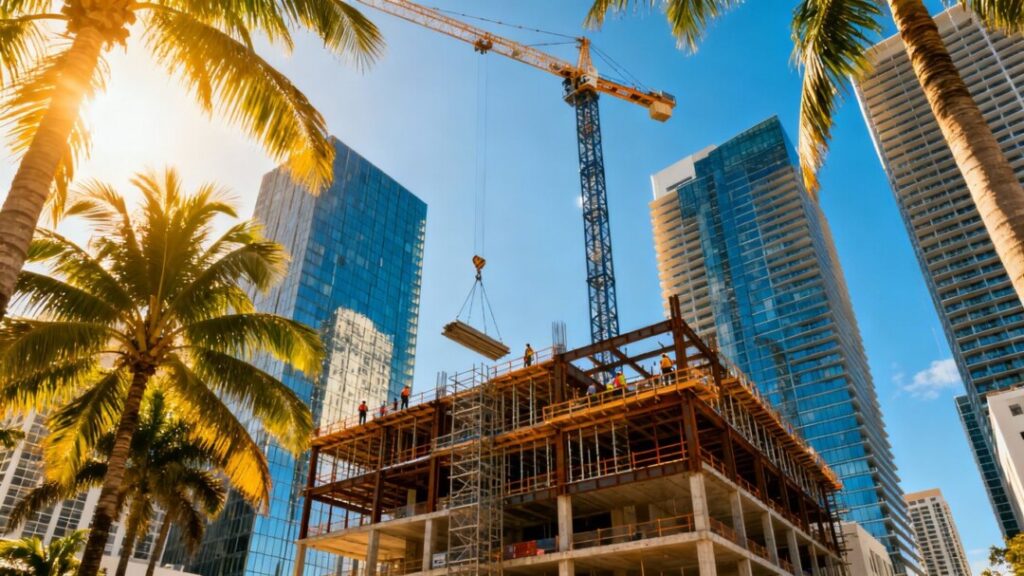Commercial real estate in Florida is experiencing a significant upswing, with landmark portfolio sales, major new investments, and robust development activity reshaping key markets like Miami, Tampa, Orlando, and Palm Beach. This wave of deals underscores investor confidence in the state’s growing population, strong economy, and favorable business climate.
Key Takeaways
- Over $395 million in open-air retail centers traded hands in a single portfolio deal.
- Institutional investors target high-growth Florida markets, especially in retail and industrial properties.
- Population growth and strong economic fundamentals continue to attract capital and top tenants.
Major Portfolio Trades Dominate Headlines
One of the most significant transactions this year has been the acquisition of a portfolio of ten open-air retail centers, primarily in Florida, totaling over one million square feet. These properties, anchored by leading grocery chains and national brands, are now under new institutional ownership after a nearly $400 million sale. The assets—spread across Fort Lauderdale, Orlando, Palm Beach, Tampa, and even reaching Charleston, SC—feature occupancy rates above 93% and serve communities with desirable demographics and limited new supply.
Alongside this, private equity and real estate firms are doubling down on high-performing assets, with many portfolios now anchored by stalwart grocers such as Publix, Trader Joe’s, and Whole Foods. These tenants, paired with daily-needs retailers, are considered especially resilient amid changing economic conditions.
New Investments Reflect Market Confidence
Beyond the headline deals, the Florida commercial property sector is seeing sustained activity in both retail and industrial segments. Recent transactions include the acquisition of a nearly 200,000-square-foot shopping mall in Jupiter, with plans for repositioning and securing Whole Foods as the lead tenant. Elsewhere, smaller industrial park acquisitions—often executed off-market—highlight ongoing investor interest in logistics and flexible workspaces to meet rising e-commerce and service-sector demand.
Population Growth and Favorable Economics Fuel Demand
Florida’s status as a growth engine continues to drive demand for commercial real estate. Industry experts point out that ongoing population gains—especially the migration of high-net-worth individuals, financial professionals, and tech leaders—create a thriving environment for mixed-use developments and retail centers. High occupancy rates, low vacancies, and the entry of new-to-market brands are testament to the region’s draw.
Markets like West Palm Beach are exemplifying this transformation, shifting from seasonal enclaves to year-round economic hubs. The creation of walkable mixed-use districts is attracting residents and companies alike, supporting a self-sustaining cycle of investment and development.
Outlook: Self-Sustaining Cycle of Growth
As Florida continues to attract top-tier investment, experts anticipate that the state’s commercial real estate markets will maintain momentum. The convergence of strong population inflows, economic diversification, and strategic investor interest is expected to keep vacancy rates low and catalyze further upgrades in the retail and industrial footprint. With a resilient mix of tenants and forward-looking redevelopment plans, Florida stands out as a leading destination for commercial real estate investment in the Southeast.
Sources
- 10-Property open-air retail portfolio trades hands for $395.5M in Florida and South Carolina, JLL.
- Bain Capital and 11North Partners Acquire Portfolio of 10 Open-Air Retail Centers Across Florida and South
Carolina, Bain Capital. - Florida Sees Surge in Commercial Real Estate, | Florida Realtors.
- Ram Realty buys 197,000sqft mall in Florida from Orion Real Estate | News, IPE Real Assets.


